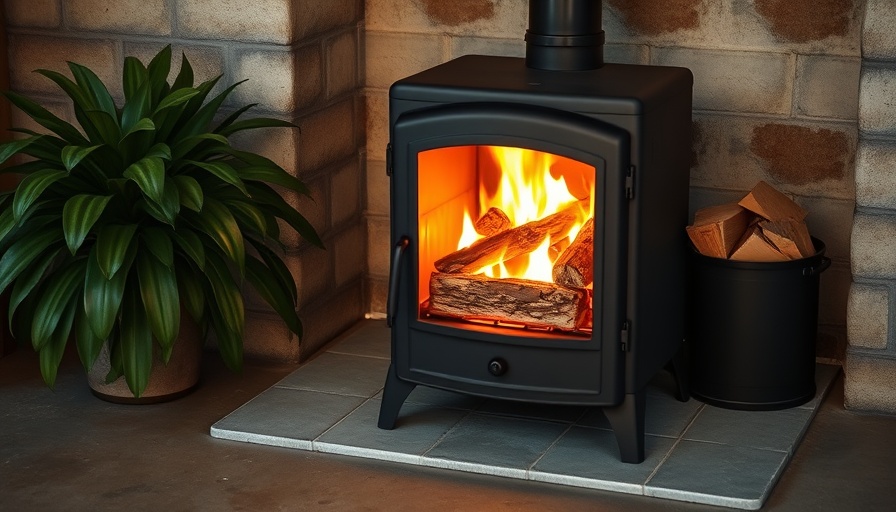
Transform Your Home With A Log Burner: The Cost and Benefits
For many modern homeowners, especially those living in vibrant cities like London, the pursuit of warmth and charm often leads to the cozy embrace of log burners. These wood-burning stoves are not just aesthetic additions; they represent a shift towards energy efficiency and sustainability. As power costs escalate, more families are exploring how log burners can provide both comfort and a welcoming atmosphere.
The Basics: What Is A Log Burner?
A log burner, commonly referred to as a wood-burning stove, serves as both an efficient heating appliance and a captivating centerpiece for any living room. Constructed from durable materials like cast iron or steel, these stoves utilize fire-resistant glass doors, allowing users to bask in the beauty of real flames while enjoying superior heat output. Unlike traditional fireplaces, log burners convert about 70-85% of the wood's energy into heat, making them a key player in the eco-friendly and cost-effective home heating landscape.
The Advantages of Installing a Log Burner
As homeowners across London continue to recognize the multi-faceted benefits of log burners, their popularity is surging. Here are a few compelling reasons why investing in a log burner could be a savvy decision:
- Energy Efficiency: Given the recent hikes in energy prices, the potential savings achievable with a log burner are attractive to budget-conscious families. With some households having access to affordable firewood, these stoves represent significant cost savings.
- Aesthetic Appeal: The visual warmth provided by a log burner enhances any interior design scheme while offering a comforting ambiance that traditional heating systems just can’t match.
- Eco-Friendliness: If sourced sustainably, wood fuel is a renewable and low-emission energy source. With positions shifting towards greener choices, log burners align perfectly with a homespun lifestyle that values nature.
- Reliable Backup Heating: In times of emergency or power outages, a log burner ensures your home remains warm, a critical feature for families in rural settings.
Initial Costs of Purchasing and Installing a Log Burner
Before you embrace the allure of a log burner, it’s essential to understand the associated costs. On average, homeowners can expect to spend between £500 and £1,500 on the stove itself, with most options hovering around the £900 mark. Unfortunately, that’s not where the financial consideration ends. Installation is often the most costly component, largely influenced by your home's specific requirements and any additional features integrated during the installation process.
Cost Drivers: What Impacts Installation Prices?
When planning for a log burner installation, several factors will influence the final price:
- Type and Size of the Log Burner: More significant stoves or those with advanced features, such as automatic controls or unique designs, typically carry a higher price tag.
- Installation Complexity: If your property requires chimney adjustments or specialized installation considerations, expect to see a proportional increase in labor costs.
- Permits and Compliance: In London, regulatory requirements can affect overall costs. Proper documentation and compliance with local codes are essential for a successful installation.
Actionable Insights for Prospective Buyers
Before you choose and install your log burner, consider these tips to maximize the benefits:
- Research Models Thoroughly: Whether you're favoring the traditional cast iron beauty or a contemporary design, understanding the efficiency ratings and warranty of the log burner is crucial.
- Evaluate Your Space: The layout of your home can determine the type of installation. Consulting with experienced professionals can lead to better decisions and avoid costly mistakes.
- Be eco-conscious: Sourcing wood from trusted, sustainable suppliers will ensure you’re making an environmentally friendly choice while also providing the best fuel for efficiency.
The Long-Term Value of Installing a Log Burner
Ultimately, investing in a log burner isn't just about instant warmth; it's about enhancing your home's value and your overall quality of life. As you weigh your options, consider how a log burner will fit into your lifestyle and your community's sustainable living goals. Now is a great time to adapt your space into a warm sanctuary amidst the hustle and bustle of London living.
Are you ready to embrace the cozy charm and practical benefits of a log burner in your home? With energy prices soaring, look no further than this efficient heating solution. Dive deeper into the world of log burners and share your newfound knowledge with friends and family!
 Add Row
Add Row  Add
Add 




Write A Comment